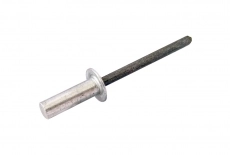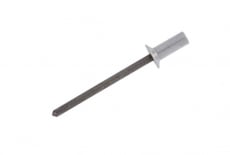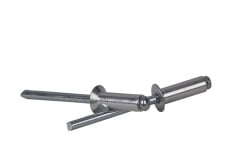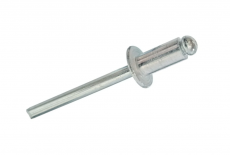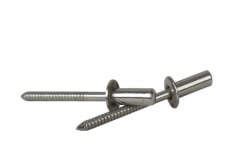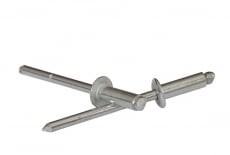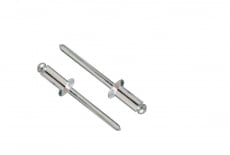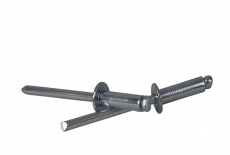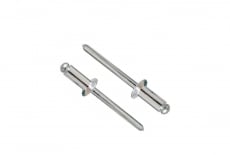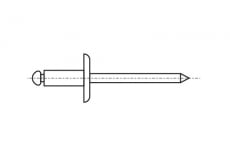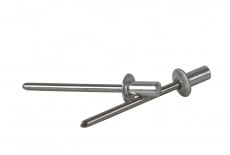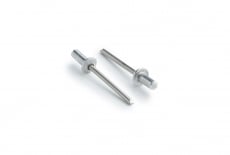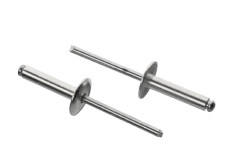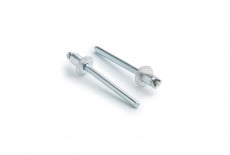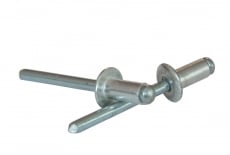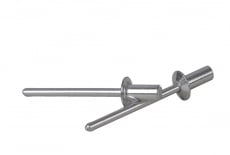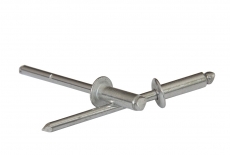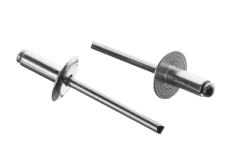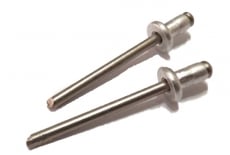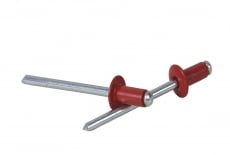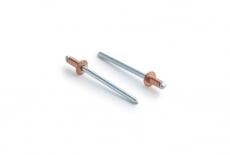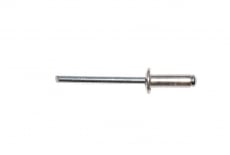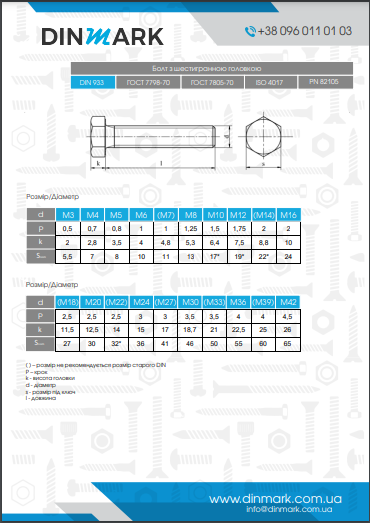
A pull-out rivet according to ISO 16582 is a rivet consisting of a body on a core. The body of the rivet contains a core that can be pulled out after installation. A semicircular head is placed at one end of the rod, which deforms the body to create a tight connection. The installation is carried out using a manual, pneumatic or hydraulic riveter. Depending on the type of head, rivets are distinguished: - standard shoulder rivets - this type is considered universal, suitable for various joining operations; - wide shoulder rivets - these rivets are mainly used for fastening fragile and unstable materials that can deform during installation; - countersunk shoulder rivets - for making aesthetic connections where it is important to hide fasteners and create a flat, smooth surface of materials and the base of the structure.
Fastening group ISO 16582
Depending on the material of manufacture, the ISO 16582 rivet is divided into:
- Stainless fasteners
- Copper fasteners
- Aluminum fasteners
Materials of manufacture
The material of ISO 16582 rivets is very diverse: it includes both conventional stainless steel A2 and A4 as well as combined material variants:
- Al/St
- St/St
- Al/Al
- Cu/St
- Cu/Br
- Al/A2
Where ISO 16582 pull rivets are used
Thanks to the unique technical characteristics of ISO 16582, strength, reliability and high corrosion resistance, stainless steel pull-out rivets are widely used in many industries and activities. They are often used in various construction and assembly processes: in the construction of facade systems, for connecting sheet materials to supporting structures, fastening cladding materials, fastening elements of door and window structures, etc.
The ISO 16582 pull-out rivet is used in mechanical engineering to connect individual parts in the manufacture of aircraft, cars, railcars, agricultural and farm machinery, plants and equipment, and in the manufacture of medical equipment and supplies. Also, stainless steel rivets are used in the production of electronics and household appliances: air conditioners, heating boilers, refrigerators, washing machines, fans, radiators, computers, computing equipment, banking equipment, cash registers, etc. In addition to industrial applications, this type of rivet can also be used in ordinary household conditions.


